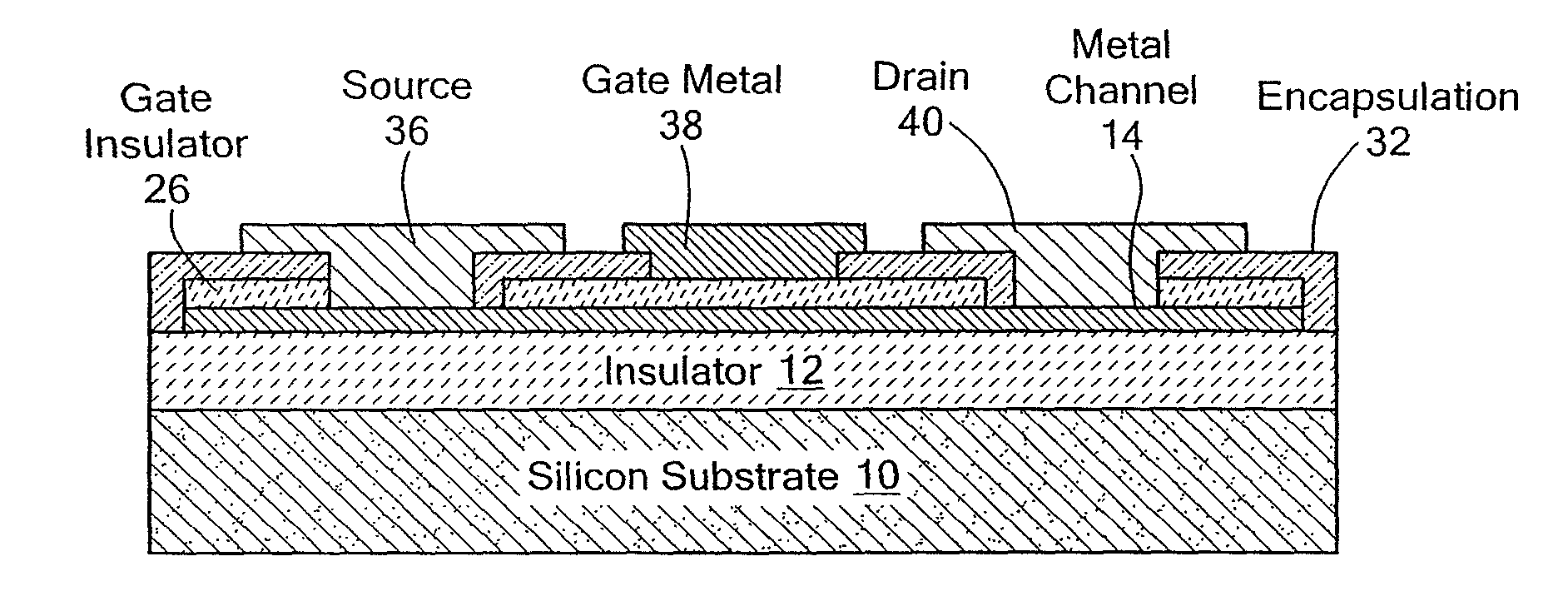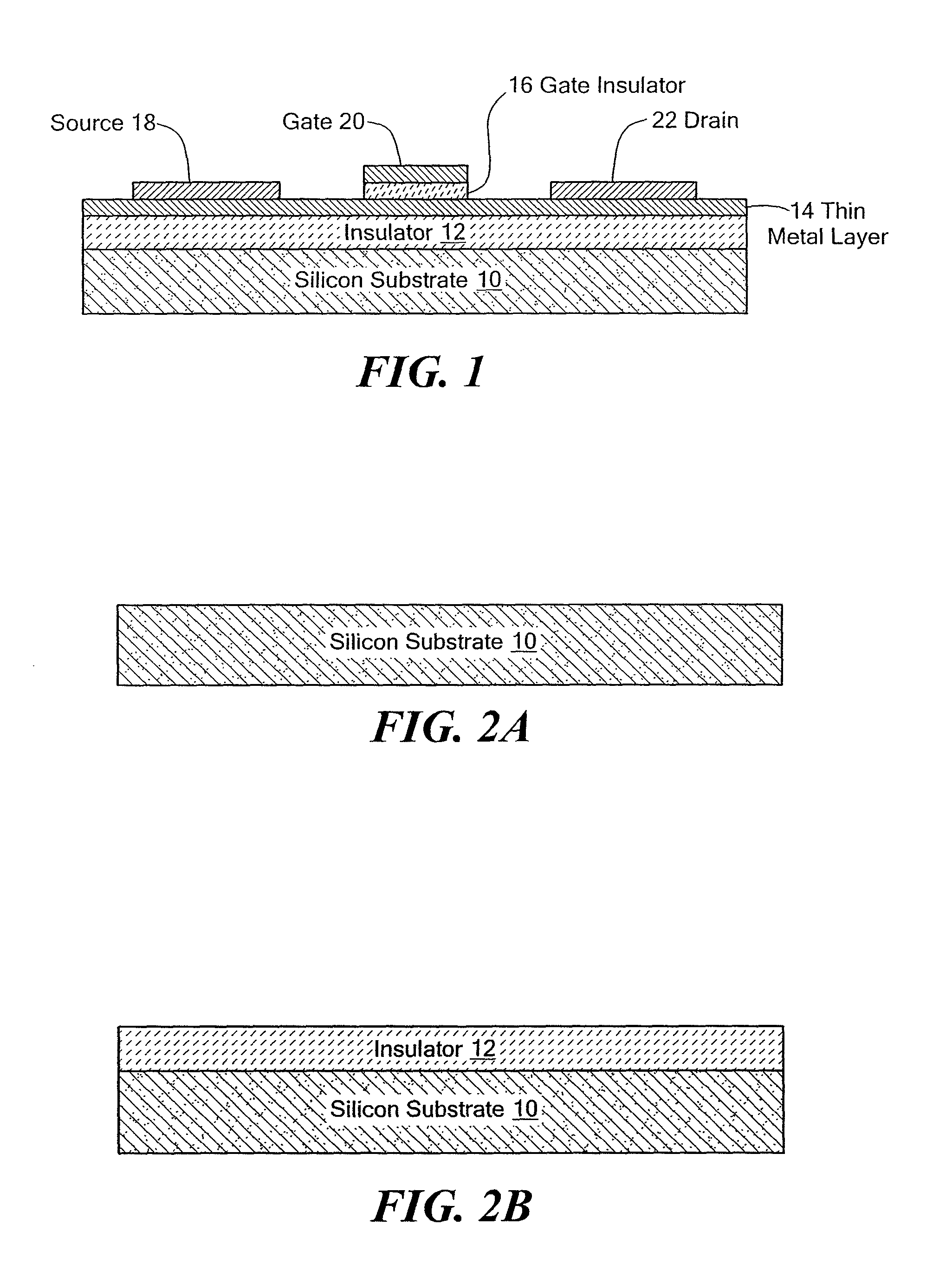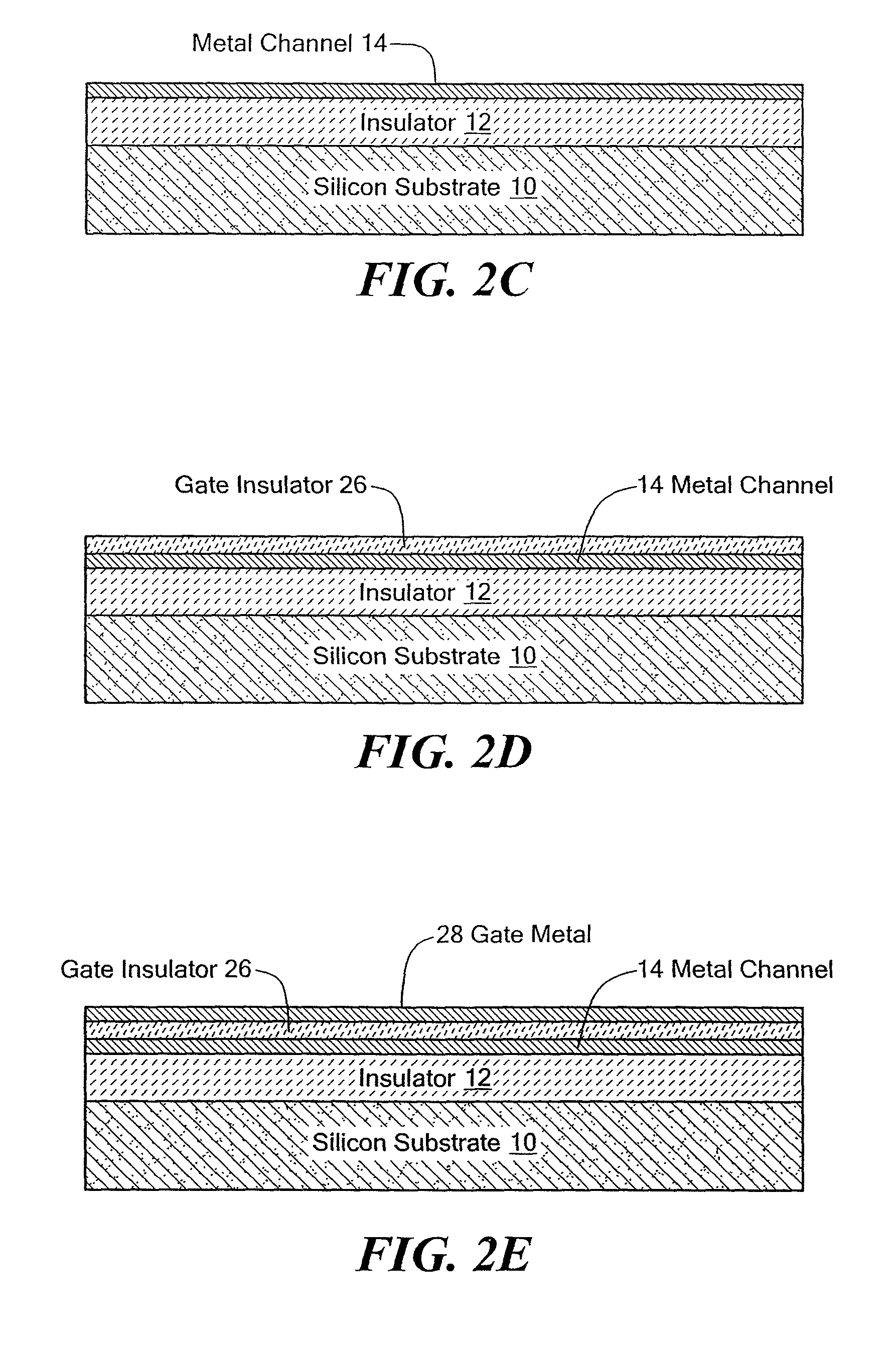Metal transistor device
a transistor and metal technology, applied in the field of transistors, can solve the problems of degrading the on-off current ratio and increasing the power dissipation of integrated circuits, and achieve the effects of improving transistor performance, improving transistor and integrated circuit performance, and reducing feature siz
- Summary
- Abstract
- Description
- Claims
- Application Information
AI Technical Summary
Benefits of technology
Problems solved by technology
Method used
Image
Examples
Embodiment Construction
[0019]An invention is described herein to improve transconductance and reduce short channel effects over that of silicon transistors. A preferred embodiment of the invention uses a high conductivity metal instead of semiconductor material in the channel to create a high transconductance device. The conductivity of metals is far higher than that of semiconductors, even strained or undoped semiconductors and even small electric fields can produce very large current flow. The device can include a metal source 18, a nanolayer or subnanolayer metal channel 14, and a metal drain 22 on an insulating layer 12 and a substrate 10 as shown in FIG. 1. A thin gate insulator 16 and a metal gate 23 cover the channel regions. Upon reverse bias between the gate and source, the thin metal channel can be depleted of electrons and the resistance of the channel will increase, if the channel is sufficiently thin. When the thin metal is completely depleted, the transistor can be completely shut off, much ...
PUM
| Property | Measurement | Unit |
|---|---|---|
| lengths | aaaaa | aaaaa |
| voltage | aaaaa | aaaaa |
| depletion width | aaaaa | aaaaa |
Abstract
Description
Claims
Application Information
 Login to View More
Login to View More - R&D
- Intellectual Property
- Life Sciences
- Materials
- Tech Scout
- Unparalleled Data Quality
- Higher Quality Content
- 60% Fewer Hallucinations
Browse by: Latest US Patents, China's latest patents, Technical Efficacy Thesaurus, Application Domain, Technology Topic, Popular Technical Reports.
© 2025 PatSnap. All rights reserved.Legal|Privacy policy|Modern Slavery Act Transparency Statement|Sitemap|About US| Contact US: help@patsnap.com



